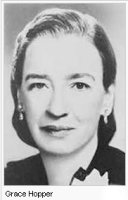
Worksheets and No Prep Teaching Resources
Reading Comprehension Worksheets
Women's History

Women's History
 Worksheets and No Prep Teaching Resources Reading Comprehension Worksheets Women's History |
 Women's History |
| edHelper's suggested reading level: | grades 8 to 9 | |
| Flesch-Kincaid grade level: | 8.02 |
|
Women in Science
By Phyllis Naegeli |

|
 1 Since the beginning of time, science has been a part of our world. Over the years, scientists have made some great discoveries. All along the way, women have been involved. Sometimes, they were accepted as a part of the scientific world. Other times, they had to fight for acceptance. Whatever the case, women have made great contributions to the world of science.
1 Since the beginning of time, science has been a part of our world. Over the years, scientists have made some great discoveries. All along the way, women have been involved. Sometimes, they were accepted as a part of the scientific world. Other times, they had to fight for acceptance. Whatever the case, women have made great contributions to the world of science. |
Create Weekly Reading Books
Prepare for an entire week at once! |
| Leave your feedback on Women in Science (use this link if you found an error in the story) |
 |
Women's History
|
 |
High School Reading Comprehensions and High School Reading Lessons
|
 |
United States
|
|
|
 | Fifty States Theme Unit |
 |
Document Based Activities |